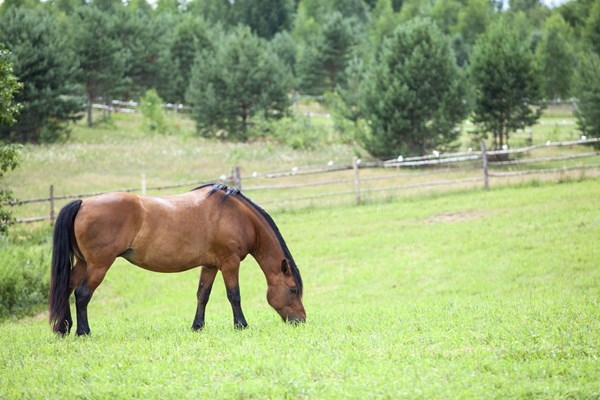 Credit: Thinkstock Make sure to read the herbicide label and ensure the herbicide you select is labeled for use in a pasture or rangeland prior to future applications.
Credit: Thinkstock Make sure to read the herbicide label and ensure the herbicide you select is labeled for use in a pasture or rangeland prior to future applications.Question: Our horse pasture was accidentally sprayed with a herbicide contacting 2,4?D, fluroxypyr and dicamba (Escalade 2) on May 19, 2015. It was also fertilized with urea and potash. Since this date, we have not allowed the horse to graze in this pasture nor has this area been retreated. We have had many conflicting answers as to when the grass can be grazed. I would appreciate your insights as to what would be the safest resolution for this situation.
Response: When it comes to herbicide applications, the herbicide label is the law and should be read prior to application. Herbicides are labeled to be applied to a specific site, for example a pasture, corn field or lawn. Escalade 2 is labeled for applications to turf grass areas (and not pastures); the label (and most all herbicide labels) can be found online. Therefore, no grazing restrictions are listed on the label. Grazing restrictions listed on herbicide labels are included to avoid herbicide residues that exceed established tolerances in products derived from the animal (mostly meat and milk), to prevent injury to the animal, and to prevent injury to other plants (from herbicide residues that can pass through in manure or urine from grazing animals). If listed on the herbicide label, restrictions on grazing, haying and movement of livestock from herbicide treated areas must be followed for specified livestock, including horses.
In this case, all of the active ingredients in Escalade 2 (2,4?D, dicamba and fluroxypyr) are found in other herbicides labeled for pastures. 2,4?D and dicamba are commonly applied to grass pastures to control broadleaf weeds, and most herbicides containing these active ingredients have a 0 day grazing restriction. However, we recommend waiting 7 days after application to resume grazing as a precaution. Fluroxypyr is less commonly used; however, there are herbicides labeled for use in pastures and range lands that include this active ingredient. These herbicide labels state anywhere from a 0- to 45-day livestock grazing restriction following application.
Using this information, your best solution would be to follow the most restrictive grazing restriction, in this case 45 days. All of the active ingredients found in the herbicide are labeled for pasture or range land use in other herbicides. However, Escalade 2 is not intended for use on pastures and therefore, the risks for grazing pastures treated with this product are less clear. The inert ingredients used to formulate Escaland 2 may differ from other products with the same active ingredients labeled for use in pasture and rangelands. Herbicide manufacturers can provide additional information about herbicide persistence and potential risks (a phone number will be listed on the herbicide label). It is a good practice to control weeds (with mowing and/or a herbicide) in horse pastures. Just make sure to read the herbicide label and ensure the herbicide you select is labeled for use in a pasture or rangeland prior to future applications.
There is no issue with the fertilizer. With granular fertilizer, we recommend restricting horses from the pasture until the fertilizer pellets are no longer visible to avoid accidental ingestion (horses can graze very close to the ground). This can occur as quickly as 1 day if the fertilizer is applied before a rainfall event. In the absence of rainfall, it can take 2 to 3 weeks for the fertilizer to dissolve.
For more information from the University of Minnesota Horse Extension visit their website.


